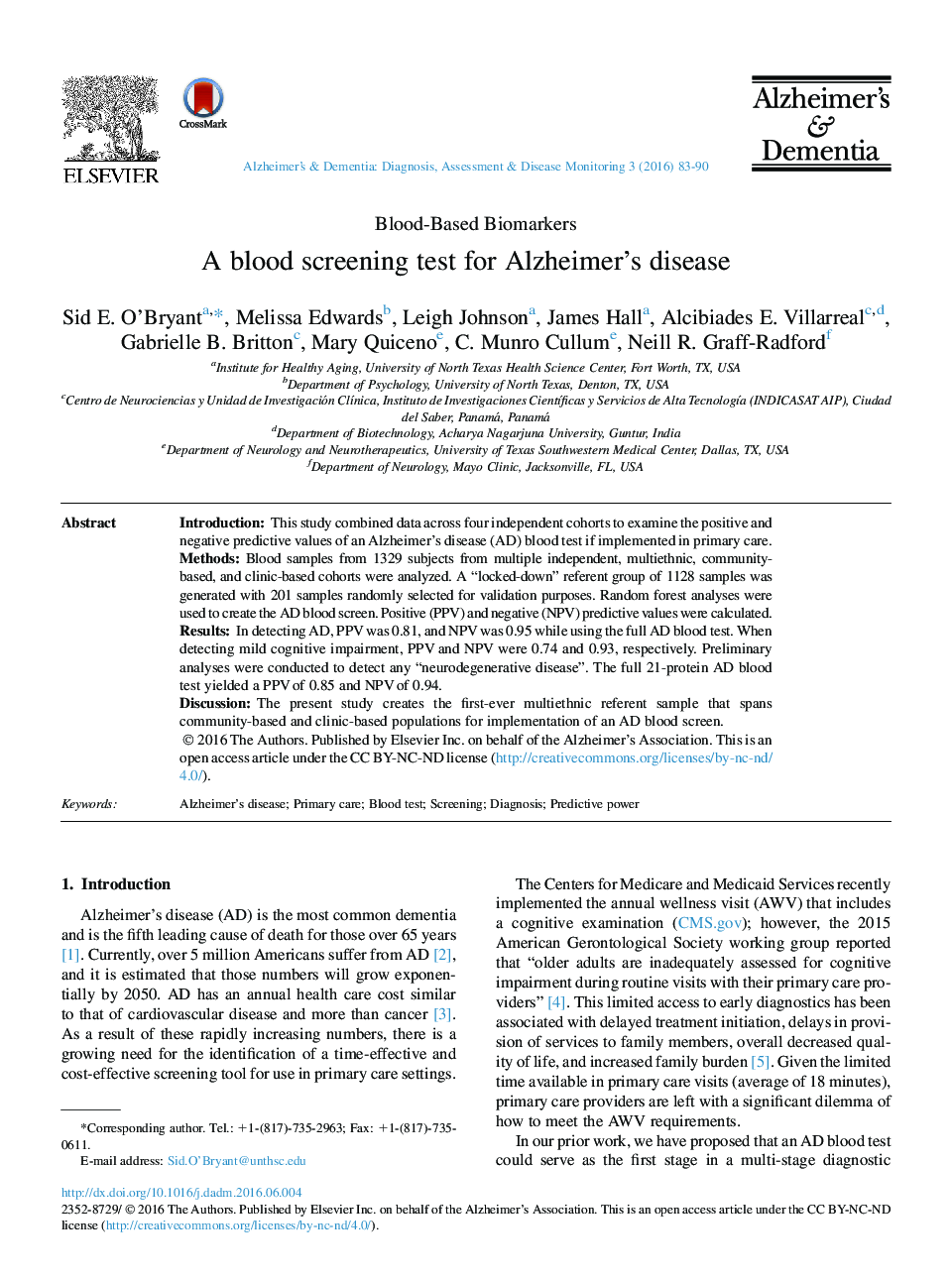| Article ID | Journal | Published Year | Pages | File Type |
|---|---|---|---|---|
| 3032022 | Alzheimer's & Dementia: Diagnosis, Assessment & Disease Monitoring | 2016 | 8 Pages |
IntroductionThis study combined data across four independent cohorts to examine the positive and negative predictive values of an Alzheimer's disease (AD) blood test if implemented in primary care.MethodsBlood samples from 1329 subjects from multiple independent, multiethnic, community-based, and clinic-based cohorts were analyzed. A “locked-down” referent group of 1128 samples was generated with 201 samples randomly selected for validation purposes. Random forest analyses were used to create the AD blood screen. Positive (PPV) and negative (NPV) predictive values were calculated.ResultsIn detecting AD, PPV was 0.81, and NPV was 0.95 while using the full AD blood test. When detecting mild cognitive impairment, PPV and NPV were 0.74 and 0.93, respectively. Preliminary analyses were conducted to detect any “neurodegenerative disease”. The full 21-protein AD blood test yielded a PPV of 0.85 and NPV of 0.94.DiscussionThe present study creates the first-ever multiethnic referent sample that spans community-based and clinic-based populations for implementation of an AD blood screen.
